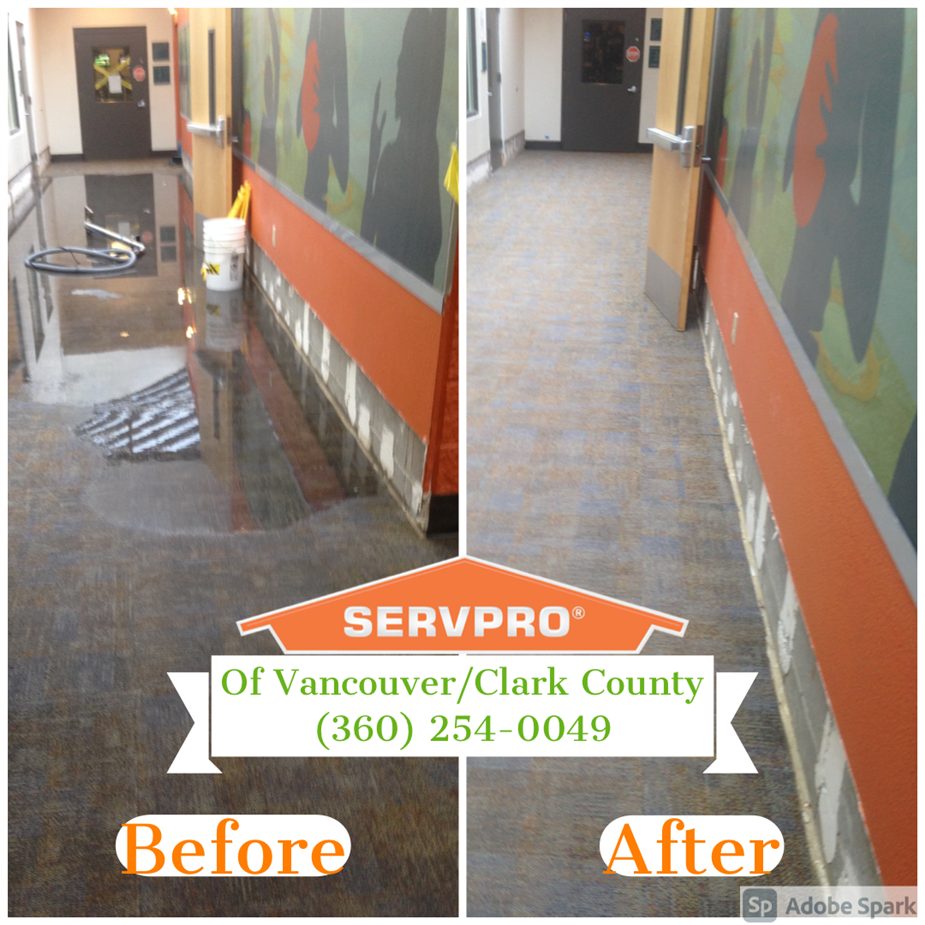Categories of Water Loss
3/10/2021 (Permalink)
 Call SERVPRO of East Vancouver/ Clark County (360) 254-0049 to make it “Like it never even happened.” We’re open 24/7
Call SERVPRO of East Vancouver/ Clark County (360) 254-0049 to make it “Like it never even happened.” We’re open 24/7
The IICRC’s S-500 Standard and Reference Guide for Professional Water Damage Restoration distinguishes water into three categories. Each category is defined by the levels of containment or possible containments in the source of the water.
Category 1 “Clean Water”
Water in this category originates from a clean, sanitary source and poses little to no risk to humans if contacted or ingested. Examples are broken water supply lines, sink or bathtub overflows, or water supplies to an appliance such as a water line to an ice maker.
Category 2 “Grey Water”
Water is this category comes from a source that contains significant contamination including chemical, biological, or physical materials. Grey Water has an elevated risk to cause illness and discomfort with any type of exposure. Examples are toilet bowls with urine, sump pump leaks, and discharged water from appliances like dishwasher and washing machines.
Category 3 “Black Water”
Water in this category is considered very harmful and contains unsanitary agents, dangerous bacteria and fungus, and toxic substances. This category of water has an extreme risk of causing illness and exposure should be avoided at all costs if the proper personal protective equipment is not available. Examples include sewage, seawater, and overflow from rivers or lakes. If left unattended Clean and Grey Water can become stagnant and may be considered Black Water.
If you have concerns with water no matter the source, SERVPRO of East Vancouver/ Clark County specializes in Water Damage Repair & Restoration and is a certified IICRC firm.






 24/7 Emergency Service
24/7 Emergency Service